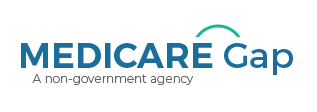What Is Medicare? Medicare Explained

Medicare is a federal health insurance program offered to U.S. citizens who are 65 and older. Younger people with disabilities, as well as as well as some younger people with disabilities who are on Social Security Disability Insurance (SSDI) (although eligibility typically happens after a 2 year waiting period following enrollment in SSDI). Medicare is not to be confused with Medicaid.
Medicare Parts
Medicare comes in different parts: Part A, B, and D, that cover different healthcare services. Here is a simple breakdown:
- Medicare Part A – This covers more expensive, long-term, and specialized healthcare needs, such as hospital in-patient stays, the costs of nursing homes and hospice, and sometimes in-home care.
- Medicare Part B – This covers more routine care, such as doctors’ services, medical supplies, check ups, outpatient services, and preventative care.
- Medicare Part C – Medicare part C is a bit different, as it’s a Medicare Advantage plan. Medicare Part C is similar to a Medigap plan, but it includes a prescription drug plan and it usually comes at little or no cost (but it’s more limited in terms of doctors and coverage, and can be harder to qualify for).
- Medicare Part D – This covers prescription drugs, as well as shots and vaccinations.
If you are receiving Social Security benefits by the time you turn 65, you will be automatically enrolled in Medicare Parts A and B. However, if you want to enroll in Medicare part D, you’ll need to proactively enroll yourself.
Premiums
While some people may be under the impression that Medicare is free for everyone who qualifies, this isn’t true. Medicare is usually less expensive than regular insurance, but there are still premiums to pay. The cost of premiums can vary wildly, and fluctuate from year to year. They typically break down as follows:
- Part A – For most people, Part A is fully covered and doesn’t cost anything. However, if you don’t qualify for Part A, you may be able to buy it.
- Part B – Everyone is subject to a premium of some kind for Part B. While Medicare Part B is optional, you are likely to be enrolled automatically if you are auto-enrolled in Part A, but you have the option to drop it.
- Part C – Premiums for Part C are sold in the private marketplace, which means they vary by provider, plan, and location.
- Part D – Because Medicare Part D strictly covers prescription drugs only, it is sold by private insurance providers. This means the premiums will vary plan to plan. In order to qualify for Medicare Part D, you will also need to enroll in a Medicare-approved plan. That being said, all plans come with a standard amount of coverage set by Medicare.
To get an idea of what your Medicare expenses might be, the Centers for Medicare & Medicaid Services offers an Out-Of-Pocket Cost Calculator. While this isn’t a definitive guarantee of your actual cost, it can help you prepare for what you might be looking at paying.
What Is The Medicare Donut Hole? Costs In The Coverage Gap
For most Medicare plans that cover prescription drugs (Medicare Part D), there tends to be a gap in coverage. This gap is referred to as a “donut hole”. The “donut hole” is the out-of-pocket costs you will need to pay for your prescriptions after your insurance has paid a certain amount, before your yearly limit is reached and Medicare begins to pay your costs again. For more information, see our article on the Medicare Donut Hole.
What If I Can’t Afford Medicare?
If you find yourself struggling to afford the cost of your healthcare, you may qualify for federal and state subsidies. This often comes in the form of Medicaid.
What Is Medicaid?

Medicaid is a program provided by the federal government for those who qualify due to disability or low income. It covers some or all of the costs of Medicare. If you qualify for both Medicare and Medicaid, you are know as having “Dual Eligibility”.
There are so many details and difficulties to enrolling, navigating the system, and keeping up with what plan will be right for you. Opportunities to save money may go amiss, and certain coverage needs may be overlooked. Don’t go it alone. Get a quote and talk to an insurance specialist today.
